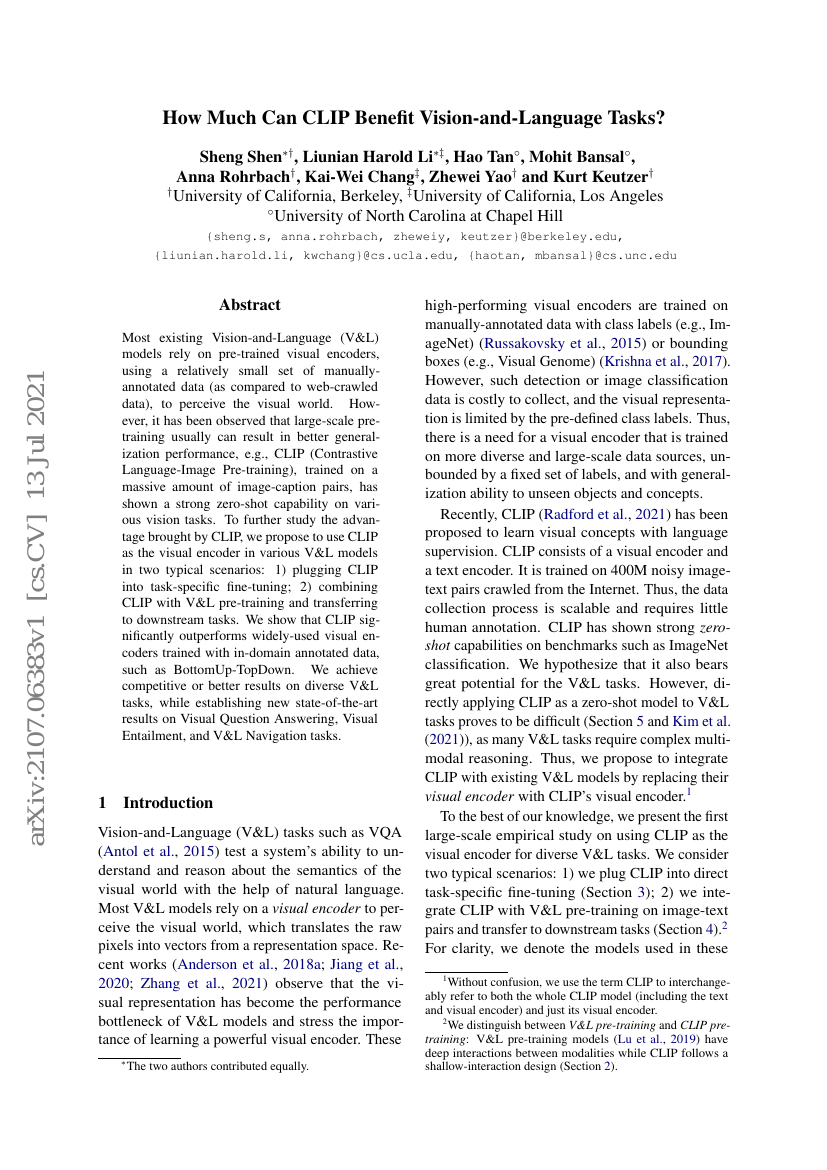Command Palette
Search for a command to run...
Sheng Shen Liunian Harold Li Hao Tan Mohit Bansal Anna Rohrbach Kai-Wei Chang Zhewei Yao Kurt Keutzer

Abstract
Most existing Vision-and-Language (V&L) models rely on pre-trained visual encoders, using a relatively small set of manually-annotated data (as compared to web-crawled data), to perceive the visual world. However, it has been observed that large-scale pretraining usually can result in better generalization performance, e.g., CLIP (Contrastive Language-Image Pre-training), trained on a massive amount of image-caption pairs, has shown a strong zero-shot capability on various vision tasks. To further study the advantage brought by CLIP, we propose to use CLIP as the visual encoder in various V&L models in two typical scenarios: 1) plugging CLIP into task-specific fine-tuning; 2) combining CLIP with V&L pre-training and transferring to downstream tasks. We show that CLIP significantly outperforms widely-used visual encoders trained with in-domain annotated data, such as BottomUp-TopDown. We achieve competitive or better results on diverse V&L tasks, while establishing new state-of-the-art results on Visual Question Answering, Visual Entailment, and V&L Navigation tasks. We release our code at https://github.com/clip-vil/CLIP-ViL.
Code Repositories
Benchmarks
| Benchmark | Methodology | Metrics |
|---|---|---|
| vision-and-language-navigation-on-rxr | CLEAR-CLIP | ndtw: 53.69 |
| visual-entailment-on-snli-ve-val | CLIP-ViL | Accuracy: 80.20 |
Build AI with AI
From idea to launch — accelerate your AI development with free AI co-coding, out-of-the-box environment and best price of GPUs.